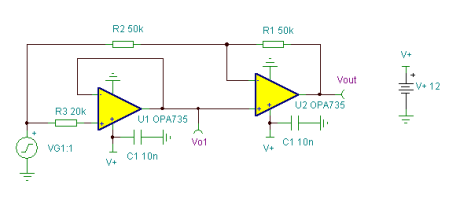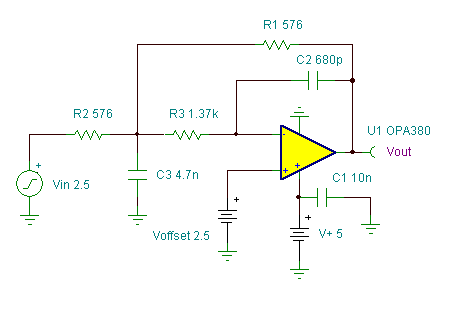10Hz Active Low-Pass Filter
This “10Hz Active Low-Pass Filter” circuit offers a very low frequency cutoff and it has the ability to operate on single supply voltages. As shown, this is a second- order unity- gain Butterworth low- pass filter using a Sallen- Key topology. One advantage of a Sallen- Key LPF over one configured as a Multiple Feedback LPF is that it is non-inverting–therefore an input signal with a positive DC offset can be accomodated. A low input bias current op amp is required for a very low frequency low- pass filter as the R values are necessarily high. Thermal noise contributed by these resistors, however, can be reduced by reducing their values by an order of magnitude together with increasing the capacitor values by an order of magnitude. Resistor thermal noise will thereby be decreased by the square- root of 10. (Circuit is created by Neil P. Albaugh, TI – Tucson )
10Hz Active Low-Pass Filter circuit:
Online Simulation of the “10Hz Active Low-Pass Filter” Circuit
The great feature of the TINA circuit simulator that you can analyze this circuit immediately with TINACloud the online version of TINA. Of course you can also run this circuit in the off-line version of TINA.
Click here to invoke TINACloud and analyze the circuit, or watch our tutorial video!
You can send this link to any TINACloud customers and they can immediatelly load it by a single click and then run using TINACloud.
Michael Koltai
www.tina.com





